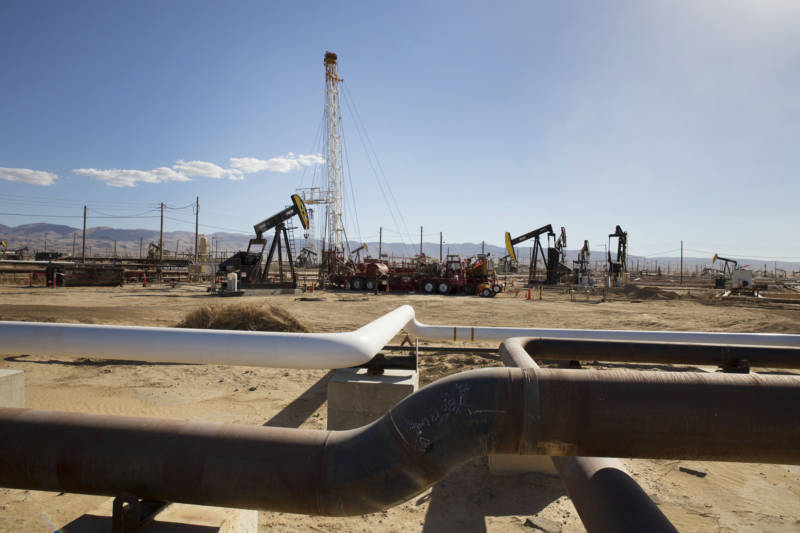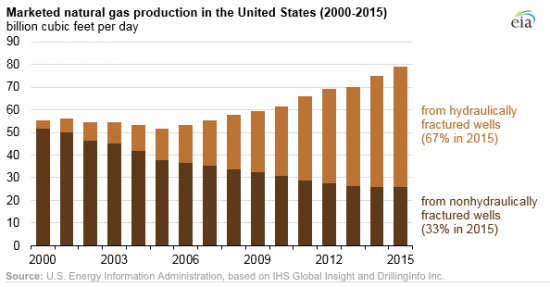More natural gas in the U.S. is coming from wells that have been hydraulically fractured than ever before, and fracking’s share of the country’s gas supply is continuing to rise, according to new data from the U.S. Energy Information Administration.
At the same time, the fracking boom in the U.S. has led to a major boost in natural gas consumption, and for the first time last year, natural gas contributed about the same level of greenhouse gas emissions as coal, the globe’s largest single source of greenhouse gas emissions driving climate change.
Sixty-seven percent of natural gas produced in the U.S. came from fractured wells in 2015, according to the data. That represented a total of 53 billion cubic feet of natural gas per day, up from 50 billion cubic feet in 2014.
In 2000, only 3.6 billion cubic feet of gas came from fractured wells — roughly 7 percent of total U.S. natural gas production that year. About a third of the gas produced in the U.S. is used to generate electricity.
The natural gas and crude oil production boom over the last decade was enabled by fracking — the process of injecting large amounts of water, sand and chemicals into wells at high pressure to release crude oil and natural gas locked within solid rock, usually shale.

